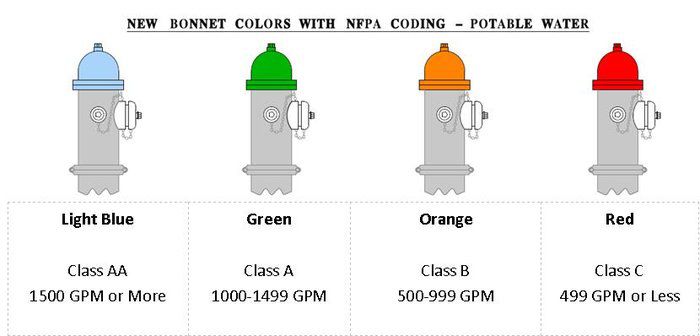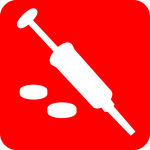One of the first challenges that firefighters face when they arrive at a fire is finding a suitable water source that provides enough water for the type of fire they are fighting. Common sense tells us a car on fire will require much less water than a burning apartment building. There are formulas used by firefighters that will tell them approximately how much water is needed to fight a given fire (see bonus facts below). Fire hydrants are commonly color coded to indicate how much water a particular hydrant will provide. This allows for quick decision making when they are deciding which hydrant to access.
Water supply for firefighting is rated in gallons per minute (GPM) available. In most urban and suburban areas, water supply is from a faraway source such as a reservoir or lake. This water is pumped through a system of above ground and underground pipes, then supplied to all of the buildings and homes in a given area. Every water system is maintained by the water district supplying the water. Most is used for everyday purposes like drinking water, bathing, doing your laundry, and watering your lawn. When there is a fire, water districts are required to allow firefighters to access this water for firefighting purposes. They do this with the commonly known fire hydrant. Due to the numerous different supply systems throughout the United States, there can be a wide range of available supply, from 500 GPM or less to over 2500 GPM.
In an effort to make it easier for firefighters to know what a specific hydrant will supply, the National Fire Protection Agency (NFPA) recommends that fire departments and water districts follow a set standard of color-coding. Known as NFPA 291, it says fire hydrants using public water supply systems should be painted chrome yellow, and their tops and caps should indicate the available GPM. Below 500GPM should be red, 500-999 GPM should be orange, 1000-1499 GPM should be green, and 1500 GPM or more should be blue.
GPM is only one of two factors of water supply. The other is pressure, rated in PSI (pounds per square inch). All hydrants are assumed to provide at least 20 psi. The NFPA sets these standards and most fire departments and water companies try to follow them. The NFPA recommendation is not the only color-coding system used. Many different municipalities create their own, for their specific situation.
So when you are driving around your neighborhood and see a hydrant painted a specific color, be assured that color has a purpose.
Class Flow Color of Bonnets & Caps
AA 1,500 gpm or greater Blue
A 1,000 gpm or greater Green
B 500 – 1,000 gpm Orange
C Less than 500 gpm Red
Firefighters can pick from available hydrants the one with the best flow, using a traffic light scheme for ease of memory. Green means go, the hydrant flow will be over 1,000 gpm; Red means stop, the flow is less than 500 gpm; Orange means caution, the flow is between 500 and 1,000 gpm. Blue means 1,500 gpm or greater.




